中国最大的民营企业中国最大的民营企业:把未来托付给数据

|
轻微交通事故,即便是小小的剐蹭,在过去也会引发中国司机之间无止尽的口角。当事人可能需要在路边花数个小时等待保险查勘人员的到来,然后再花数个小时填写表格。需要耗费数天或通常数周的时间才能够得到赔偿。 2017年,平安这家中国第二大险企和中国营收最高的非国有公司,推出了“极速现场查勘”系统。投保人只需要打开智能手机的应用程序,回答几个问题,然后便可以提交索赔。但该应用程序最妙的功能在于,当事人可以无需等待查勘员的到来。客户可以对受损车辆拍照,并将其发送至平安公司的服务器,后者可以在三分钟或更短的时间内计算出修理估价。如果客户能够接受估价,系统显示这个过程“完成”,平安可以立即转账给客户。 去年,平安客户使用这一功能解决了730万件理赔,占总理赔数的62%。这一服务通过减少虚假理赔以及人工疏漏,每年为公司节省了超过7.5亿美元的费用。但其易用性完全得益于该功能背后高度复杂的人工智能和数据处理操作。 为了生成精准的预估,平安会将车辆照片与数据库中在中国出售的6万个不同汽车类别和车型的2500万个部件进行比对。系统会评估这些部件是否可以修理或必须更换,然后计算超过14万个车库的部件和人工成本。平安将这些信息与面部、语音和图像识别科技以及复杂的反欺诈规则矩阵进行整合。平安的首席科学家肖京称,为了设计、开发和整合这项新服务,一个由人工智能专家、数据科学家和保险经理组成的团队花费了三年的时间。他兴高采烈地说道,它在“全球范围内属于首创。” 平安正在使用人工智能和大数据等技术改变了中国人的日常生活,而自动化的汽车查勘只是其奇妙用途的冰山一角而已。这家总部位于深圳的公司还将面部识别技术用于消费借贷业务;平安称其人工智能技术可以通过识别54种不同的“微表情”,来决定贷款申请人是否在撒谎。以平安医保科技为例,也就是人们熟知的“好医生”,它为2.65亿通过移动应用程序注册的病患提供咨询服务,并协助医师诊断数千种疾病。在过去五年中,平安还打造了其自有的云服务,并设计了一整套与之配套的人工智能驱动型软件服务,它不仅可以支持其自身的工作,同时还能够向数千家规模较小的金融机构、医院和医疗客户推销数千种服务。 这些产品和服务都拥有一个重要的功能:他们会将由中国的数字原生消费群体生成的在线数据与保险行业30多年来集聚的大量 “离线”存储数据以及洞见进行配对。平安认为,这些离线信息——其中包括像商业贷款违约率、皮肤癌的症状和配备弹簧减震系统车辆的再销售价值这类不相干的元素——意味着其数据服务有更好的数据作为支撑。负责平安科技公司的副首席执行官陈心颖说:“我们的优势在这里得到了体现,我们能够与整个行业进行连接。” 这类连接对于平安雷厉风行的创始人及首席执行官马明哲的愿景来说至关重要。马明哲围绕一系列寿险、医疗和财险产品,打造了一个庞然大物。平安的保险业务如今拥有1.84亿名客户,也是公司2018年1640亿美元营收的主要来源。随着中国经济走向成熟,这些稳定行业的增长也在放缓。但它们带来了平安打造其科技武器所需的大量现金流和数据。平安的领导层预测,公司科技业务在未来的贡献将占到其营收的半壁江山,而当前仅有6%。同时,公司还将有能力与阿里巴巴、腾讯这类的纯科技竞争对手一争高下。 |
FENDER BENDERS, even minor ones, used to mean interminable hassle for Chinese drivers. One could wait hours by the roadside for an insurance inspector then lose hours more filling out forms. Reimbursement took days, and often weeks. In 2017, Ping An, China’s second-largest insurer and its biggest non-state-owned company by revenue, rolled out a “Superfast Onsite Investigation” system enabling policyholders to submit claims by simply opening a smartphone app and answering a few questions. But the app’s niftiest feature offers the option to not even wait for an inspector. Instead, customers can snap photos of a damaged vehicle and send them to a Ping An computer, which can respond with a repair estimate in three minutes or less. If the customer accepts the estimate, then wan-cheng (success) Ping An can transfer funds immediately. Last year, Ping An’s customers used this feature to settle 7.3 million claims, or 62% of the total. The service saves the company more than $750 million each year by reducing bogus claims and human error. But its simplicity belies the extraordinary sophistication of the artificial intelligence and data processing operations that make it possible. To generate accurate estimates, Ping An matches photos of vehicle damage against a database of 25 million parts used in the 60,000 different auto makes and models sold in China. The system assesses whether those parts can be repaired or must be replaced, then calculates the cost of parts and labor in more than 140,000 garages. Ping An integrates all that information with face-, voice- and image-recognition tech and a complex matrix of anti-fraud rules. Ping An chief scientist Xiao Jing says it took a team of A.I. experts, data scientists, and insurance managers three years to design, develop, and integrate the new service. It is, he exults, “the only one of its kind in the world.” But automated auto inspection is only one of myriad marvels that illustrate how Ping An is using A.I. and big data to transform everyday life in China. There’s also the facial- recognition technology the Shenzhen-based conglomerate uses in its consumer lending business; Ping An claims its A.I. can read 54 distinct “micro-expressions” to determine whether loan applicants are lying. Or take Ping An Healthcare and Technology, better known as Good Doctor, which off ers consultations to 265 million patients registered via a mobile app—and aids physicians in diagnosing thousands of ailments. Over the past five years, Ping An has also built its own cloud and designed a suite of A.I.-driven software services to go with it—not just to support its own work but also to market services to thousands of smaller fi nancial institutions, hospitals, and medical clients. These products and services have a vital feature in common: They match online data, generated by China’s digitally native consumer masses, with a vast storehouse of “offline” data and insight amassed over three decades in the insurance business. Ping An believes that this offline information—which encompasses elements as disparate as business-loan default rates, symptoms of skin cancer, and the resale value of a car with sprung shocks—means that its data services are based on better data. “That’s where our advantage comes in,” says Jessica Tan, the deputy CEO who oversees Ping An’s technology companies. “We’re able to connect to the full picture.” Such connection is central to the vision of Ping An’s hard charging founder and CEO, Peter Ma. Ma built a massive business around an array of life, health, and property and casualty insurance. Ping An’s insurance arm now reaches 184 million customers and accounted for the bulk of the company’s $164 billion in revenue in 2018. Growth in those relatively staid industries is slowing as China’s economy matures. But they are generating the massive flows of cash and data Ping An needs to build its tech arsenal. Ping An’s leadership foresees the day when the company’s technology businesses contribute as much as half of its earnings, up from only 6% today, and compete head-to-head with pure technology plays like Alibaba Group and Tencent Holdings. |
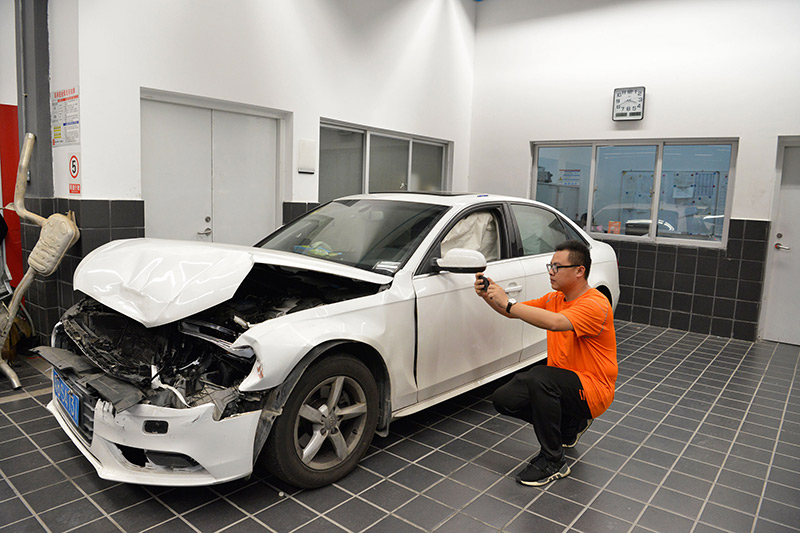
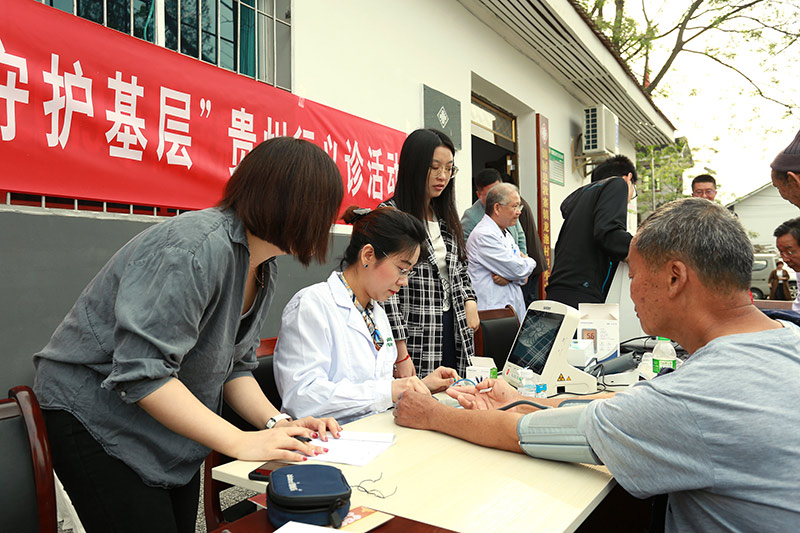
|
金融服务巨头公司很少成为创新方面的领头羊。平安自身的公司名便有“和平、安全”之意,让人想起热牛奶和充足的睡眠。然而平安已经酝酿了一大批专属技术,用于支持集团的五大“生态系统”,即金融、医疗、汽车、房地产和智慧城市。与此同时,在线金融和医疗服务(一些通过自有品牌销售,一些则授权给第三方)如今拥有5.65亿多名注册用户。 平安将营收的1%用于创新投资。在过去10年中,该集团已经在研发领域投入了70多亿美元,而且马明哲曾经承诺在未来10年将追加投资150亿美元。这笔资金滋养了11家科技附属公司,其中两家——“好医生”和汽车买家平台“汽车之家”——已经上市,也催生了多个估值达数十亿美元的私营“独角兽”。到目前为止,这5家企业中仅有两家盈利。即便如此,集团科技企业的合并估值达到了700亿美元。 香港Schulte Research的首席执行官保罗·舒尔特是金融公司如何运用科技方面的专家。他说,平安“从一开始”就意识到了人工智能和数据分析的重要性。他指出,尽管其他中国公司是在新工具面前依然浑浑噩噩,但平安“超级清醒而且在不断地推进”。如今,这个推力正在变得越来越强大。 |
Giant financial services companies rarely double as disruptive innovators. Ping An’s very name, which means “peace and safety,” evokes warm milk and an early bedtime. Yet Ping An has already spawned a menagerie of proprietary technologies that support the group’s five key “ecosystems”: finance, health care, autos, real estate, and smart cities. Meanwhile, its online fi nancial and health care services, some sold under its own brand and some licensed to others, now boast more than 565 million registered users. Ping An earmarks 1% of revenue for investments in innovation. Over the past 10 years, the group has plowed more than $7 billion into research and development, and Ma has vowed to invest $15 billion more in the decade to come. That endowment has nurtured 11 technology affiliates, of which two—Good Doctor and Auto home, a platform for car buyers—are publicly traded and three are privately held “unicorns” with multibillion-dollar valuations For now, only two of those fi ve are profi table. Even so, the combined value of the group’s tech ventures tops $70 billion. Paul Schulte, CEO of Hong Kong–based Schulte Research and an expert on how financial companies use technology, says that Ping An grasped the importance of A.I. and data analysis “from the beginning.” While other big Chinese companies seemed to sleepwalk past the new tools, he says, Ping An was “hyper awake and constantly pushing.” These days, that push is only growing more forceful. |
****
|
平安大厦是中国第二高的摩天大楼,是深圳天际线的主要建筑之一,位于福田金融区,共有118层。从其较高的楼层,高管们的视线可以在越过不多的建筑之后抵达一座小山,山顶建有邓小平的雕像。这位领导人在毛泽东去世后让中国走出了封闭和僵硬的计划经济控制。负责平安集团保险业务的李源祥开玩笑说,自己天天都在向雕像鞠躬,为的是感谢邓小平让中国的经济和平安走上了快速发展之路。平安于1988年成立,当时还是国有航运企业中国招商局集团低层官员的马哲明说服了高层,让他成立了财险部门。那时,保险公司的概念对于中国来说还十分陌生,但中国招商局集团总部位于深圳特区。在这里,政府不仅允许开展经济实验,并对此持鼓励态度。平安随后进军寿险和医疗险业务,获得了这些市场领域的“先行者”优势,也正是这个期间,数百万中国民众第一次成为了富足的中产阶级,也推高了对保险的需求;公司最终设立了盈利的零售银行。 从20世纪90年代开始,平安便利用不断深化的改革环境,成为了中国首家外国公司参股的金融机构:高盛和摩根士丹利是早期的入股者。公司最终于2004年在香港上市。(当前股东包括由泰国正大集团控股的三家公司,在去年年底共计持股9.19%,正大集团执行董事长之子谢展在2018年12月收购了《财富》杂志。) |
PING AN TOWER, the second-tallest skyscraper in China, dominates Shenzhen’s skyline, looming 118 stories over the Futian fi nancial district. From its upper floors, executives can gaze over lesser buildings to a hill upon which stands a statue of Deng Xiaoping, the leader who steered China out of isolation and rigid centralized economic control after the death of Mao Zedong. Lee Yuansiong, the deputy CEO who heads Ping An’s insurance group, jokes that he bows to the statue every day—thanking Deng for setting China’s economy, and his employer, on the path to rapid growth. Ping An got its start in 1988 when Ma, then a junior official at state-owned shipping company China Merchants Group, persuaded superiors to let him set up a property and casualty insurance unit. The concept of an insurance company was unfamiliar in China, but China Merchants was headquartered in Shenzhen, a special economic zone, where economic experimentation was not only tolerated but encouraged. Ping An later branched into life and health insurance, enjoying “first mover” status in those markets just as millions of Chinese people attained middle-class prosperity for the fi rst time, driving demand; it eventually rolled out a profi table retail bank. Beginning in the 1990s, Ping An took advantage of widening reforms to become the first Chinese financial institution in which foreign firms could own equity: Goldman Sachs and Morgan Stanley were early backers. The company eventually went public in 2004, listing in Hong Kong. (Current shareholders include three companies controlled by Thailand’s CP Group, which together held a stake of 9.19% at the end of last year. Chatchaval Jiaravanon, son of the executive chairman of CP Group, has owned Fortune since December 2018.) |
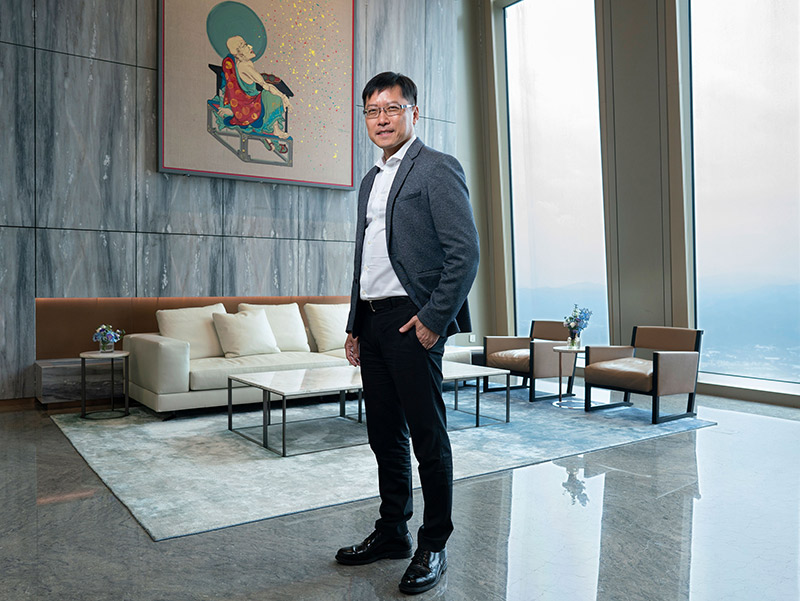
|
即便其客户群和营收出现了飙升,平安公司也犯过错误。通过收购进行扩张的举措尤为不幸。2008年,平安购买了布鲁塞尔金融巨头富通 50%的股权,但旋即富通便走向了破产。2010年,公司收购了陷入困境的商业借贷银行深发展银行,但收购之后便鲜有起色。 在应对这些挑战之际,马明哲对腾讯和阿里巴巴的崛起感叹不已。这些公司迅速地将电子商务和移动支付数据转变为成功的产品,这也暗示了平安自身深厚的数据池所拥有的潜力。(马哲明与阿里巴巴创始人马云、腾讯创始人马化腾同姓,但这三位之间没有任何血缘关系。)公司的首席创新官罗中恒说,马明哲的愿景在于,平安要发展成为一家融合性的公司,既要有稳健金融公司的优点,又要结合灵活科技公司的特长,并通过创新和尝试帮助保持这个大块头的稳步增长。 为了实施这一愿景,马明哲将目光投向了公司自身高管之外以及海外的人才市场。陈心颖于2013年加入平安,她成长于新加坡,并在麻省理工学院拿到了电器工程和计算机科学学位。她在咨询公司麦肯锡工作了13年,后者是平安的客户之一。她为平安开展的首个项目也成就了她的首次中国大陆之旅。她笑着说:“我记得当时与办公室经理发生了争吵。我真的不想去。”这项任务最后变成了一项18个月的奇幻历程,期间,她帮助开发了一个首要的行政园区。她当前的职务让她经常旅行于三点之间,也就是深圳、平安在上海32英亩的科技中心以及回新加坡探亲。 保险集团负责人李源祥也来自于新加坡。澳大利亚人罗中恒在花旗银行担任了多个高管职务,包括全球零售银行负责人,他于2017年加入平安。首席科学家肖晶是中国人,他在硅谷精工爱普生和微软干了一段之间之后于2013年加入了平安。肖晶说,在平安这家有着丰富数据资源的公司工作就像是发现了“珍宝岛”一样。 |
Even as its customer base and revenue soared, Ping An made missteps. Eff orts to expand through acquisition were particularly ill-fated. In 2008, Ping An bought a 50% stake in Brussels-based financial conglomerate Fortis, just before that company collapsed. The 2010 acquisition of Shenzhen Development Bank, a troubled commercial lender, has been slow to bear fruit.、 As he grappled with those challenges, Ma marveled at the rise of Tencent and Alibaba. The rapidity with which those companies parlayed data on e-commerce and mobile payments into successful products hinted at the power inherent in Ping An’s own deep data pool. (Peter Ma shares the same surname as Alibaba cofounder Jack Ma and Tencent founder Huateng “Pony” Ma, but the three are not related.) Ma’s vision, says Jonathan Larsen, the company’s chief innovation officer, was that Ping An could combine the best of a stable finance company and a nimble tech fi rm—innovating and experimenting to help keep a big company growing at a steady pace. To implement that vision, Ma has reached outside the company’s ranks and outside China itself. Jessica Tan, who joined in 2013, grew up in Singapore and earned degrees in electrical engineering and computer science from MIT. She spent 13 years at consultancy McKinsey & Co., where Ping An was a client. Her first project for Ping An also marked her fi rst trip to mainland China. “I remember arguing with my office manager,” she says, laughing. “I really didn’t want to go.” That assignment turned into an 18-month odyssey in which Tan helped develop a major administrative campus. Her current role puts her in constant orbit between headquarters in Shenzhen, Ping An’s 32-acre tech center outside Shanghai, and Singapore to see her family. Lee, the insurance group head, also hails from Singapore. Larsen, an Australian, held a variety of top roles at Citibank, including head of global retail banking, before joining Ping An in 2017. And Xiao, the chief scientist, is a Chinese native who joined in 2013 after stints in Silicon Valley at Seiko Epson and Microsoft. Starting at a company with a data trove the size of Ping An’s, Xiao says, was like discovering “Treasure Island.” |
****
|
将平安的数据能力与阿里巴巴和腾讯进行比较是一个十分棘手的命题,因为各家公司有着迥异的业务领域。作为阿里巴巴的主要零售市场,淘宝拥有6.66亿月活跃用户,而其移动支付平台支付宝拥有超过10亿名用户。腾讯的微信平台拥有超过10亿的活跃用户,他们平均每天产生450亿条信息。舒尔特估计,BAT(中国的百度、阿里巴巴和腾讯)每天合计处理的数据是平安成立以来所处理数据总量的10倍。 但平安的高管认为,质量比数量更重要。他们称其业务收集到的数据比BAT的更加丰富,因为它涉及与健康、理财和财产有关的大额交易,这些都涉及客户生活中最有意义的决策。 |
COMPARING PING AN’S data capabilities with those of Alibaba and Tencent is a tricky proposition, given the radically diff erent scales at which they operate. Taobao, Alibaba’s main retail marketplace, has 666 million monthly active users, while Alipay, its mobile payments platform, boasts more than a billion. Tencent’s WeChat platform draws more than a billion active users who generate an average of 45 billion messages—every day. Schulte estimates that the BAT (China’s troika of Baidu, Alibaba, and Tencent) processes at least 10 times as much data every day as Ping An has acquired in its entire existence. But Ping An executives argue that quality matters more than quantity. The data its businesses collect is richer than that gleaned by the BAT, they claim, because it involves big ticket transactions relating to health, wealth, and property— among the most meaningful decisions in customers’ lives. |
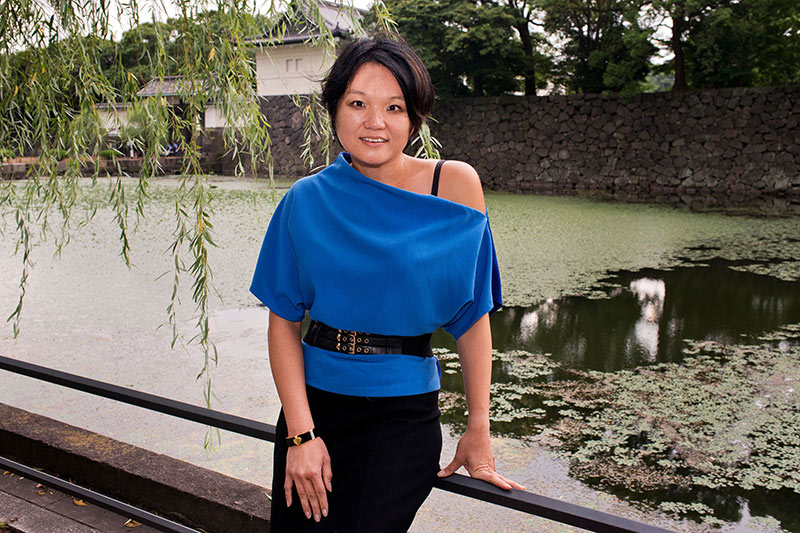
|
作为这方面的案例,陈心颖提到了汽车之家。当平安2016年从纽约上市公司澳大利亚电信巨头澳洲电信手中收购该网站的控股权时,汽车之家看起来是一家十分有希望的公司,但有待实际检验。在平安收购之后,该网站巩固了其作为中国最大在线汽车销售平台的地位,同时开始逐渐盈利。陈心颖认为平台之所以出现转机,原因在于汽车之家使用了平安数十年积累的与电子商务无关的数据,例如上千万条有关汽车贷款和汽车保险理赔的数据。同样重要的是,平安说服了1.4万家汽车经销商使用汽车之家进行销售管理,这样便生成了有关消费喜好的实时情报。所有这些信息让汽车之家能够更加精准地定位目标客户,并为他们提供融资服务。陈心颖指出,“如果平安只是做纯险企,而且只盯着这块业务不放”,这一点就无从说起了。 与经销商的合作为平安数据扩张指明了一条道路。通过向其他公司授权大数据技术,这家险企打造了一个良性循环,期间,平安通过合作关系收集了更多的数据,从而让公司能够改善其运营模式,并借此吸引更多的客户。如今,已经有22家汽车险企使用“极速”事故理赔平台。约460家中国银行和超过1800家中小金融服务公司使用平安的一账通金融平台。平安的专属云服务能够让公司以相对较小的成本扩展这些产品,从而帮助这个生态圈更快地发展壮大。 |
As a case in point, Jessica Tan cites Autohome. When Ping An acquired a controlling stake in the New York–listed company from Telstra, the Australian telecom giant, in 2016, Auto home was seen as promising but unproven. Under Ping An, it has consolidated its position as China’s largest online auto sales platform while swinging to profitability. Tan attributes the turnaround to the fi rm’s ability to tap into decades of Ping An data unrelated to e-commerce—millions of records about auto loans and car-insurance claims, for example. Just as important, Ping An persuaded some 14,000 auto dealers to use Auto home for sales management—generating real-time intelligence about consumer tastes. All of this information enables Auto home to target customers more precisely and off er them services like financing—and it wouldn’t have been possible, Tan says, “if I were just a pure insurer who sticks to my stuff.” Those dealer partnerships point to one key to Ping An’s data expansion. By licensing big-data tech to other companies, the insurance giant creates a virtuous circle in which Ping An collects still more data through the relationships, enabling it to improve its models and thereby attract more clients. There are now 22 auto insurers using the “Superfast” accident-claim platform. Some 460 Chinese banks and over 1,800 other small- and medium-size fi nancial-services fi rms use Ping An’s OneConnect fi nancial platform. And Ping An’s proprietary cloud lets the company scale up these off erings at relatively little expense, helping the circle grow bigger, faster. |
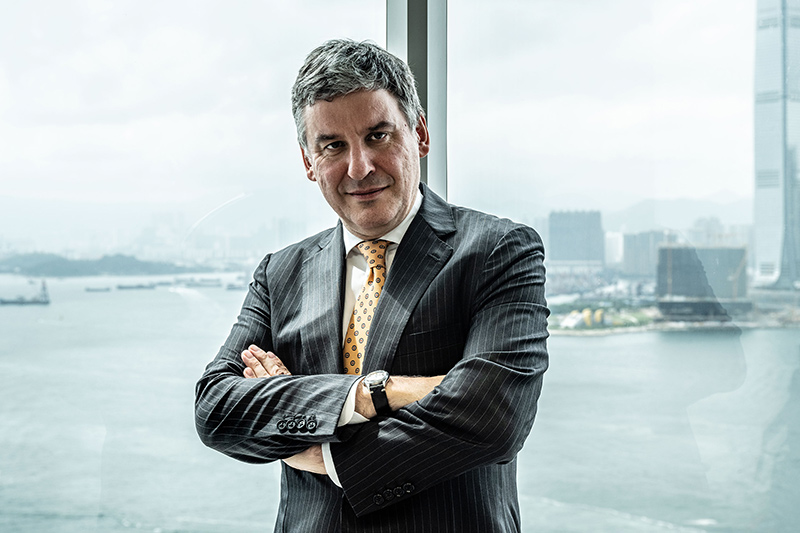
|
平安以同样的方式打造了备受欢迎的人工智能模型,用于评估消费信贷风险。阿里巴巴、腾讯和平安都已经获得临时牌照,用来提供信贷服务,但平安更受金融机构的青睐,揽获了约200家银行。尽管阿里巴巴和腾讯的模型依赖于对电子商务数据的分析,从而为其自有客户提供消费型小额贷款,但这类贷款的价值很少超过数千元(约合几百美元)。陈心颖指出,平安的模型能够为“小企业主提供数十万人民币的完全无担保贷款,这一点是没有问题的,因为我们已经从事这项业务很多年了。” |
In the same vein, Ping An has built a popular A.I.-driven model for assessing consumer credit risk. Alibaba, Tencent, and Ping An have all been granted provisional licenses to off er credit-bureau services, but Ping An’s is the favorite of financial institutions; it’s being used by about 200 banks. While Alibaba’s and Tencent’s models rely on analysis of e-commerce data to underwrite small loans for purchases by their own customers, the value of such loans rarely exceeds a few thousand yuan—a few hundred dollars. Ping An’s model “can give a small business owner a loan for a few hundred thousand completely unsecured, no problem,” says Tan, “because we have been doing this for years.” |
****
|
为了支持其高屋建瓴的高科技策略,马明哲组建了一支无与伦比的人才队伍。平安雇佣了2.4万多名软件工程师、800名数据科学家和180名人工智能专家。公司称已经提交了1.5万多项技术专利申请。平安还控制着庞大的风投和私募股权基金,包括2017年设立的10亿美元的专用基金——国际旅游者基金。管理该基金的罗中恒表示,这只基金专注于投资金融科技和医疗领域的早期初创企业,目的是为了捕获平安还未开发的平台或技术。 平安被低估的股价经常遭到平安高管的诟病,他们认为将平安完全看作一家险企会让人忽略其作为科技公司的潜力。平安的股票市盈率约为12,与安盛和安联相当,但远低于阿里巴巴和腾讯,这两家公司的市盈率分别为35和38。 然而,一些指标正在朝着正确的方向迈进。公司称,在过去两年中,平安金融服务三分之一的新客户已经成为了其互联网业务的注册用户。这意味着科技公司正在帮助代理“交叉销售”更多高利润产品,例如,当人们使用汽车之家购买汽车时往往会在平安购买保险。 该公司还将其科技资产组合视为抵御劳动力老龄化和经济增速放缓的一种保障手段。随着中国人口老龄化,罗中恒看到医疗领域存在巨大的机遇。他说:“中国人变得越发富足,而且受教育的程度也越来越高,他们也会对服务标准有着更高的期许。随之而来的有慢性疾病——54%的男性吸烟,其中9%的长期吸烟者会患上肺癌——以及其他一系列与心脏病、缺乏运动、肥胖有关的病症。”平安的HealthKonnect平台旨在帮助中国政府控制这一正在逼近的疾病高发浪潮,后者负担了中国55%的医疗成本。公司正在开发的多个功能可以帮助实现病例的数字化,分析医疗数据,支付医疗费用,并甄别医疗诈骗。 平安搜集和分析此类私人数据的能力正在快速增长,也引发了复杂的隐私问题。面部识别和“微表情”分析如今已经成为使用平安云服务公司的标准功能。然而,如果销售医疗保险的公司通过面部扫描就可以计算器体脂率,客户会对此感到高兴吗?“好车主”(Good Driver)应用会时常传回驾驶员去了哪,车速以及变道是否顺畅等数据,但它正在日渐成为购买车险的一个强制下载软件,这一举措是否会引发消费者的反感呢?如果销售这些保险的公司还知道投保者的职务、财富净值以及病史,消费者又该作何感想? 陈心颖表示,平安已经开发了复杂的机制来保护客户数据的隐私,而且这些数据在用于建模时都已经进行了匿名化处理。然而,有关个人保险和贷款的决定当然不可能是匿名的。中国文化通常并不像西方文化那样注重隐私;在现实当中,正是出于这一原因,平安自身的最大创新在现阶段仍然可能只会专注于中国市场。马明哲最近对《金融时报》说:“我们没有进行海外收购的意愿。中国市场有着最好的增长前景。” 平安在说服中国消费者买单方面遇到了一些小问题。它通过一个老派的销售力量来帮助出售保险,也就是110万销售其保单和其他产品的独立代理。自动化也为这支队伍带来了影响。罗中恒说:“他们基本上不会使用纸张。客户关系管理、社交网络管理都是自动化的。”然而,他们年复一年地为公司带来了数十亿美元的销售额:事实证明,在中国这种新兴国家,在吸引客户方面最好用的应用莫过于真人。(财富中文网) 本文另一版本登载于《财富》杂志2019年8月刊,标题为《平安的数据城堡》。 译者:冯丰 审校:夏林 |
TO SUPPORT his high-flying high-tech strategy, Ma has assembled a formidable talent pool. Ping An employs more than 24,000 software engineers, 800 data scientists, and 180 A.I. specialists. The company says it has fi led more than 15,000 technology patent applications. Ping An also controls a gaggle of venture and private equity funds, including the Global Voyager Fund, a $1 billion war chest launched in 2017. Larsen, who helms Voyager, says the fund focuses on early-stage ventures in fintech and health care—securing stakes in platforms or technologies Ping An has yet to develop itself. That the stock is undervalued is a constant lament of executives, who argue that viewing Ping An solely as an insurer misses the potential of its tech ventures. Ping An shares trade at a price-to-earnings ratio of about 12—on par with mature insurers such as AXA or Allianz but a far cry from Alibaba and Tencent, which trade at 35 and 38 times earnings, respectively. Still, some metrics are trending in the right direction. Over the past two years, a third of new customers for Ping An’s financial services have already been registered users of its Internet businesses, the company says. That suggests the tech ventures are helping agents “cross-sell” more lucrative products—for example, when people who use Autohome to buy a car wind up getting insurance from Ping An. The company also counts its technology portfolio as a hedge against a graying workforce and a slower economy. Larsen sees a huge opportunity in health care as China’s population ages. “You’ve got higher expectation of service standards from an increasingly affluent and educated population,” he says. “You have the onset of chronic diseases—54% of males smoke, 9% of long-term smokers get lung cancer—and a host of other conditions [related to] heart disease, lack of exercise, obesity.” Ping An’s HealthKonnect platform aims to help the Chinese government, which covers about 55% of the country’s health care costs, contain this looming wave. The company is working on features to help digitize medical records, analyze health data, pay bills, and spot fraud. Ping An’s burgeoning capacity to collect and analyze such intimate data raises complicated privacy issues. Facial recognition and “micro-expression” analysis are now standard features for companies using Ping An’s cloud. Should customers be pleased that a company that sells health insurance can calculate their body fat percentage with a face scan? Does it bother consumers that the Good Driver app—which constantly relays where they go, how fast they drive, and how smoothly they change lanes—is increasingly a mandatory download for someone buying auto insurance? And what if the company selling them that policy also knows their occupation, net worth, and health history? Tan says Ping An has developed elaborate systems to safeguard the privacy of client data, and that data is fully anonymized before being used in modeling. But decisions about insurance and loans for individuals, of course, are anything but anonymous. Chinese culture generally doesn’t place the same value on privacy that Western culture does; in practice, that makes it likely that Ping An’s biggest innovations will remain concentrated in China for now. “We don’t have aspirations to make acquisitions overseas,” Ma recently told the Financial Times. “The Chinese market has the best growth prospects.” Ping An is having little trouble persuading Chinese consumers to sign on. It’s doing so with the help of an old-school sales force—the 1.1 million independent agents who sell its policies and other products. Automation has affected this army too. “They basically never touch a piece of paper,” Larsen says. “Client relationship management, social network management—it’s all automated.” Still, they drive billions of dollars in sales, year after year: In emerging economies like China’s, it turns out, the killer app for wooing customers remains an actual human. A version of this article appears in the August 2019 issue of Fortune with the headline "Ping An's Castle Made of Data." |













